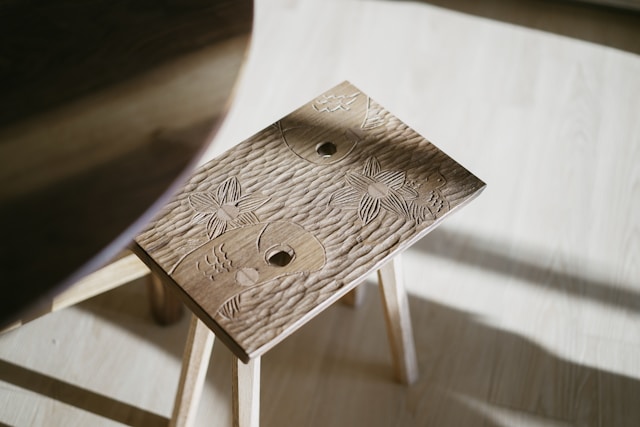The history of printmaking is the history of the human pursuit of creativity, innovation, and expression of the inexpressible. From the earliest woodcuts to the more refined techniques of etching, printmaking has allowed not only art to evolve, but ideas to spread, and access to art to become more democratised, reaching new social classes, regions, and cultures. It has been an evolution of art that dances together with technical innovation and popular culture trends for centuries.
So, if you’re in possession of prints for your wall, observe them as we dive deeper into the rich history of printing, how it ended up on your walls, and how it bridged the gap between exclusivity and accessibility.
The Origins Of Printmaking: Woodcuts
The story of your favourite print begins as a woodcut. This was one of the earliest methods for transferring images onto paper and fabric. The earliest example of this practice dates back to the 9th century in East Asia, where people carved an image on a wooden block, then applied ink to the raised areas and pressed the block onto paper or fabric. It was in such a way that new images, ideas, literature, art, and knowledge spread. Suddenly, by the 15th century, the woodcut found its way into Europe, where it was used to illustrate religious texts, decorate devotional books, and disseminate visual motifs to households that otherwise might have never been able to afford a painting.
Thanks to the practice of woodcutting, the gap between the sacred and the everyday was bridged, making imagery a shared cultural experience.
Refining The Technique
Soon, however, the demand for finer detail and greater nuance grew, and it was high time new techniques were invented to offer more precision.
Engraving
By the 15th century, artists began working with engraving. In this case, images were incised directly into metal plates, usually copper, filled the grooves with ink, and then pressed the plate onto paper. Unlike wood, these metals allowed for far more intricate lines and enabled artists to depict more complex scenes, textures, and even shading!
It was a medium so popular that it gained even more prominence during the Renaissance, when art and knowledge flourished hand in hand. Through engraving, works of classical antiquity, religious scenes, and scientific illustrations could circulate widely across Europe, shaping intellectual and cultural exchange.
Etching
But things were far from over for printmaking. Another great leap came with etching in the 16th century. It’s a technique that relies on acid rather than direct carving to create images. Artists coat a metal plate with protective ground, draw designs through it, and then allow acid to bite into the exposed lines. The result was a softer, more fluid quality than engraving, one that captures a sense of spontaneity and immediacy.
Etching was preferred by many artists for its extraordinary expressive possibilities. Some masters of etching at the time were Rembrandt and Francisco Goya. They pushed the medium beyond mere reproduction into the realm of high art. Tonal richness, dramatic contrast—the history of printmaking was forever changed.
Beyond Art: How Printmaking Shaped Culture And Education
One of the main things printmaking did was democratise art and make it more accessible than ever. It was no longer restricted to wealthy patrons and religious institutions. Images were suddenly easily reproduced and distributed to a far, far broader audience. So visual culture entered the homes of merchants, artisans, and modest households.
And it did not end with art. Printmaking later played a crucial role in expanding literacy and education. Once the technique of printing evolved in the Middle Ages, the printing press quickly came into existence, further democratising reading and education among every social class. Illustrated books and prints could now be shared to support learning and enhance the storytelling power of a narrative. History, myths, and religion became more imaginative and powerful.
Modern Masters: Printmaking In The 20th Century
In the modern era, artists such as Picasso, Matisse, Warhol, and many more redefined the medium’s possibilities, as they dived into tireless experiments with scale, colour, and repetition. The result was that their work reinforced printmaking’s role as a laboratory of innovation, where traditional craftsmanship met the radical vision of the artists.
And to this day, there is a never-ceasing appreciation for the historical techniques. Many contemporary printmakers still revive woodcuts, engravings, and etchings, celebrating the tactile, hands-on processes in an increasingly digital world. At the same time, digital artists are not fighting the trend but blending these age-old methods with digital technologies, creating hybrid works that honour tradition while embracing modernity.
So, in the end, the legacy of printmaking is not really a story about perpetual reproduction, but more of a testament to the enduring interplay of art, technology, and society.
Woodcuts, Engraving, Etching, Printing
Call it what you want. It’s an art form that is both art and communication. It enabled artists to share their visions with audiences far beyond the walls of courts and churches, shaping culture through beauty and accessibility.
Each stage of printmaking’s evolution reminds us that innovation in art often lies in finding new ways to balance precision with expression and individuality. The process’s legacy remains a living testament to the idea that art, once multiplied, does not lose its power but amplifies its reach, enriching history and our present.

